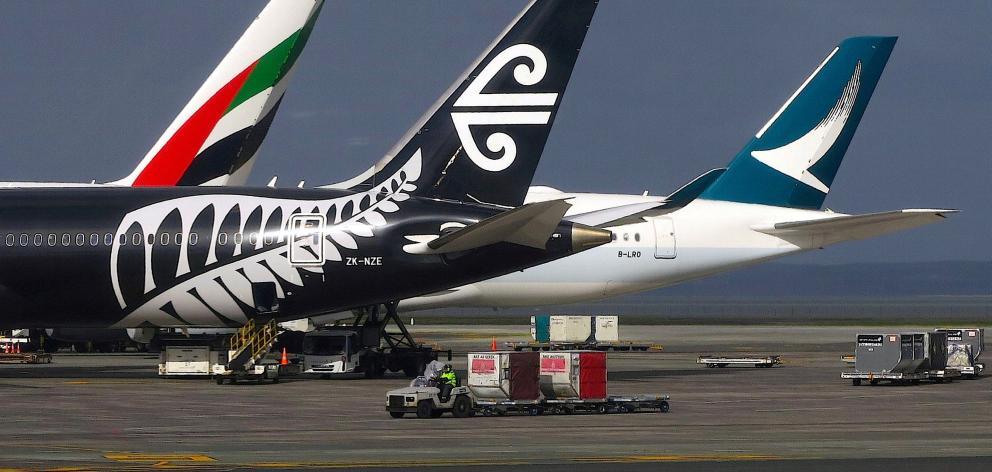
"That's a new development," director-general of health Dr Ashley Bloomfield told The New Zealand Herald this morning.

"The crews coming in from overseas-based airlines will now be housed in managed isolation facilities before they fly out again."
Aircrew are exempt from the regular testing of border-facing workers that was mandated in a Public Health Response order earlier this month.
Bloomfield has repeatedly responded to concerns about this exemption by saying that work with airlines was ongoing to ensure a satisfactory safety regime would be set up.
He said New Zealand-based aircrew did not have to go to a managed isolation or quarantine (MIQ) facility.
"They still do a couple of days self-isolation and require a negative test before the go out and about."
Board of Airlines Representatives of NZ executive director Justin Tighe-Umbers said the new requirements would likely be implemented before the end of the month.
All positive cases will now be genomically sequenced to provide the best clues about the source of an outbreak and how cases are linked, Bloomfield said.
There is still no certainty about how the current large Auckland cluster started, and efforts to find the source have been hindered by the small proportion of MIQ cases that were genomically sequenced.
Only about 20% of the 143 MIQ cases had been sequenced on August 11, when the outbreak was first detected.
Currently 49 out of 158 MIQ cases - 31% - have been sequenced, though the rate is much higher for all 1464 confirmed cases in New Zealand.
"Of all the samples since the start of the pandemic in New Zealand, they [ESR] have done the whole genome sequencing on over 50 percent of cases, which is actually one of the highest in the world," Bloomfield said.
"Our plan now is that we do whole genome sequencing on every positive test result that we get."
Asked why the rate for MIQ cases was so low, Bloomfield said: "Because it wasn't routinely being done."
In recent weeks, he said ESR had been recovering and sampling as many MIQ cases as possible, focusing on cases that arrived from the United Kingdom - where the Covid-19 strain of the Auckland cluster is most commonly found.
"And they started looking for samples from people who tested positive during July, people from where the index case likely picked up an infection - if indeed it did come through MIQ.
"They still haven't found a match so there's no clue there, but obviously they keep looking."
Bloomfield said there was nothing new to report on the genome sequencing of the weak positive case he identified yesterday.
As the country outside Auckland moved to level 1 yesterday, he stressed the importance of ongoing testing.
The next two weeks will focus on tourism and hospitality businesses, given the ongoing risk of someone carrying Covid-19 outside Auckland, which moves to full alert level 2 at 11.59pm tonight.
The use of pop-up testing stations, GP practices and community-based assessment centres will continue, alongside regular testing of border-facing workers.












